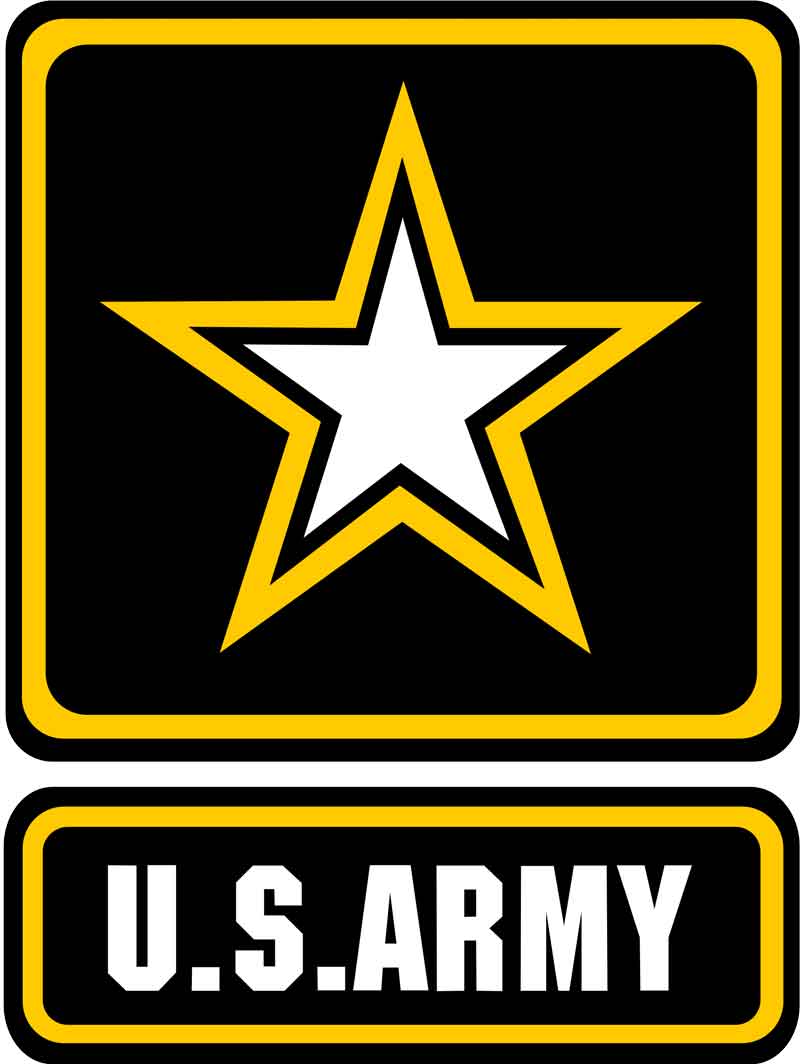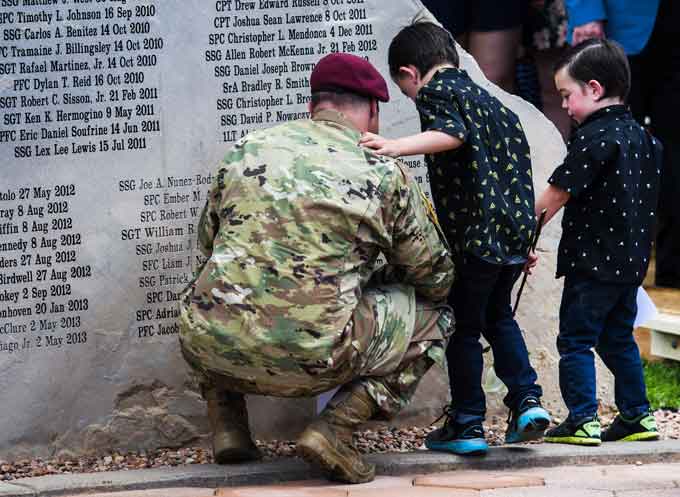
By Tony Peck, The Gazette
They call themselves “quiet professionals.”
Soldiers with the Army’s Special Forces – known as Green Berets – are secretive and rarely give interviews. Those with Fort Carson’s 10th Special Forces Group are no different.
But when discussing the deaths of one of their own, their understated words turn more assertive. These are soldiers who understand Memorial Day, and the necessity of honoring those who died in service, better than most.
“Guys that have laid down everything, the public needs to know what that guy has done for their country,” said Deryk, a weapons sergeant in the group’s 2nd Battalion, which returned to Colorado Springs from Afghanistan in mid-April at the end of a difficult tour that left two dead.
“The way I view it now, we signed up to do this so you can live that American life. We do this so that you can live the life you want to over here. That’s what we are fighting for.”

Deryk was on the same team as Sgt. 1st Class Stephen Cribben, from Simi Valley, Calif., who died in combat on Nov. 4, 2017, in Logar Province.
Cribben was posthumously awarded the Silver Star.
Sgt. 1st Class Mihail Golin, from Riga, Latvia, died New Year’s Day in Nangarhar Province.
He was posthumously awarded the Bronze Star.
The soft-spoken Green Berets, using only their first names, ranks and team positions, agreed to interviews as a way to honor the memories of their fallen friends.
“This group of guys is over there doing a job that nobody else wants to do, and I don’t think anybody else can do. The Green Berets are holding it down out there,” said Pat, Cribben’s team sergeant.
The fighting often takes the teams to remote regions where the closest help might be hours away. They deploy in teams of a dozen and each member performs multiple jobs.
When a member of the team dies, those left behind must assume his responsibilities even as they grieve.
The missions are often classified and can require years of specialized training. Behind that discipline, however, the Green Berets still suffer the rigors of combat.
“You feel pain like everybody else does, and you get tired like everybody else does and you get scared just like everybody else does,” said Pat. “The difference is you see it and you do it anyway.”
The unit released few details as to what happened on the days Cribben and Golin died. All that is publicly known is both men were killed during firefights with the enemy.
Aside from the province and date, the military rarely releases the circumstances surrounding a Green Beret’s death due to the classified nature of their overseas missions.
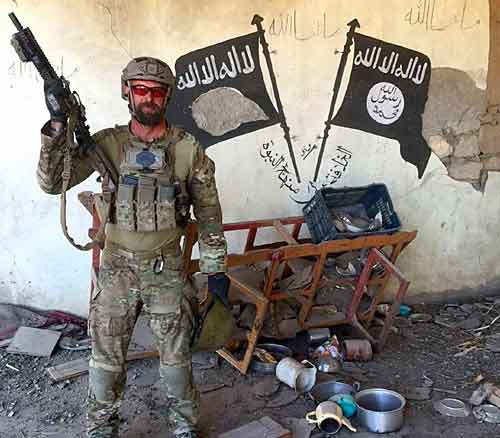
Building a team
Soldiers complete 18 months of Special Forces training before becoming a Green Beret. For some, that is the first 18 months of their military career, while others have spent years in the Army.
Before Cribben joined 10th Group, he was a military policeman with multiple deployments, which included Afghanistan and Iraq.
Golin was equally experienced before becoming a Green Beret, serving as an infantryman in one tour in Iraq and two in Afghanistan.
But, once with a team, even tested soldiers are rookies again.
“When a new guy shows up, he is still an outsider,” Deryk said. “It takes closer to a year before that guy actually becomes part of the family. It’s not by choice, it’s just how it is.”
The men often used the words family and team interchangeably – to them there is no difference.
“You are with these guys day in, day out, you get to know their family, you get to know their kids,” said Mike, an engineer on Golin’s team. “You have these guys as families. You get to see the hardships they are going through.”
Eventually the new member is accepted and begins to exert his own influence on the team.
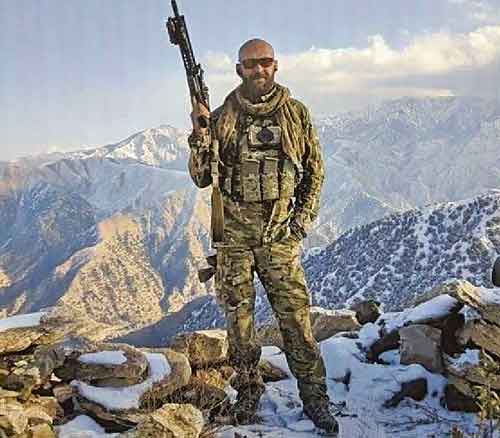
“Each team will have a completely different personality, it is a combination of everyone that is involved,” said Chris, a medic on Cribben’s team.
It falls to the team sergeant to manage that personality, “bump-steering the team left or right to where they need to be to be successful,” said Pat.
And eventually, the team sergeant must select soldiers to help him lead.
“It’s going to be that alpha type dude. It would be easier if you had a bunch of followers and one leader,” Pat said.
“But when you have a room full of leaders, you will notice those who have sway over the others.”
One individual who held sway on Pat’s team was Stephen Cribben.
“He could get an entire room to perform better just because (of who) he was. He was one of those people you build a team around,” Pat said.
Deployed to assist
The battalion deployed in late 2017, spreading its teams across Afghanistan. Their mission was to train, advise and assist Afghan commandos.
During this time, the Green Berets and their Afghan partners are credited with killing several high-level insurgents, including members of the Taliban’s “Red Units,” their most elite fighters.
“It was just us 12 and our partner force. They pretty much took us and put us in the middle of nowhere. It took all of us coming together and building that place up,” said Mike.
“You are with these guys, only these 12 guys for months on end. You get irritated with each other, you squabble with each other, but you make it work, you are pretty much surviving.”
Cribben was killed just weeks into the deployment.
His teammates call him Steve.
“He lost his life being selfless,” said Deryk. “But he was just being himself. He didn’t go above and beyond or anything, that was just Steve being Steve.”
(Memorial Day honors fallen service members, while Veterans Day is an opportunity for Americans to publicly recognize living military veterans. This day and everyday, we remember their lives, courage, legacy and their service. Courtesy of the U.S. Army and YouTube. Posted on May 25, 2018)
Cribben’s actions on the day he died earned him the Silver Star.
The medal citation has not been publicly released but earning the nation’s third-highest decoration for combat valor demonstrates that Cribben’s actions were nothing short of heroic.
But his teammates did not have time to think about medals and heroism during that day in November.
Minds were still racing as Cribben’s team returned from the firefight. After sweeping spent brass from their trucks, the team carried Cribben’s remains to an aircraft preparing to ferry him home.
“When we carried him to the bird, that was rough. No one had thought about it yet, everybody was still amped. Until we walked into that room and we saw that flag over him. Now your guard is down, and you face the situation,” Pat said.
“We load him in the airplane, the airplane takes off, does a loop back around,” said Lucas, a medic on Cribben’s team. “It was coming over the mountains in Logar, and the sun was setting right there, and the airplane just flew right where the sunset was.
“Some people are pretty religious,” Lucas said. “Some aren’t.”
“Right after the airplane leaves the valley, a V of geese flies right over us. Man, it was the craziest feeling.”
‘I have a job to do’
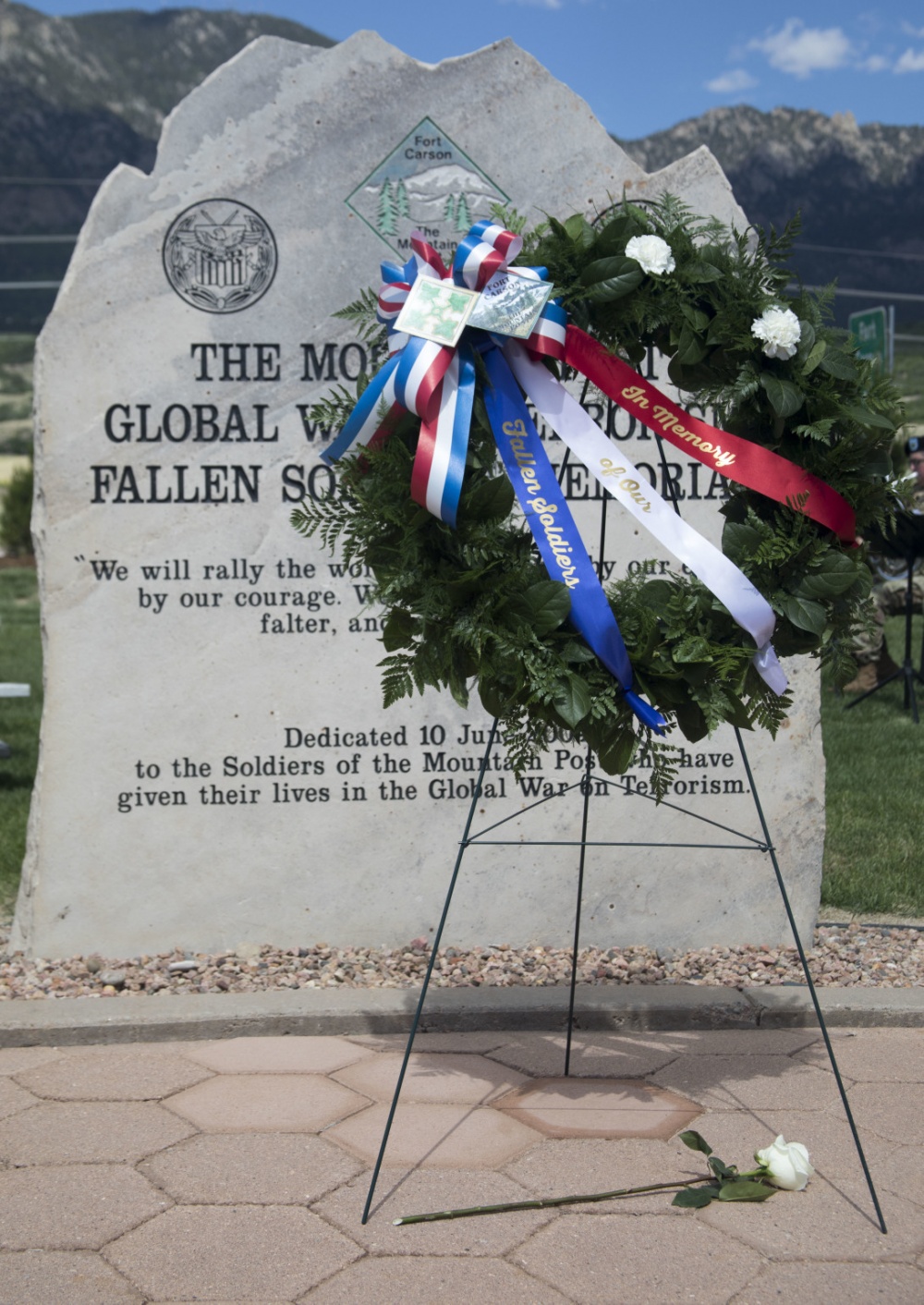
Two months later, Golin was killed.
His teammates call him Misha.
“I got a knock on the door, ‘Hey, Misha got killed last night.’ How do you deal with that? Well I went on a 12-mile ruck, listened to some music, tried to get myself together,” said Willie, a weapons sergeant on Golin’s team.
Keeping themselves busy was essential in dealing with their grief.
For some it was exercise, for others is was obsessing over their kit – cleaning magazines, moving a smoke grenade or exchanging the contents of a pouch. The men preferred action even when leadership sympathetically offered rest.
“They tried to keep me off some operations for a week or two,” said Mike.
“At that time we were extremely busy, going out every single day. I pulled our team sergeant aside and said I understand what you are trying to do, but I am good. I have a job to do, we have a job to do. I would just feel better if you would let me go do it.”
It is difficult for team leadership to watch their men struggle with loss after spending months training and preparing them, watching the team become a family, explained Pat.
But after Cribben’s death, Pat watched his team galvanize around the loss.
“It’s an inner strength that I’ve witnessed in every one of my guys. Especially when guys started getting hurt and we lost Steve. Faced with that reality, the things that I asked them to do after that, you could see it, it’s there,” he said.
“Every one of my guys, I saw their faces when they we were getting on the helicopter. You can tell when someone is praying in their nods right before the helicopter touches down. They were all making their peace,” Pat said, struggling suddenly with his emotions.
“It is amazing to watch. These guys had that kind of courage to give it everything they had every mission, even though it might be their last. They did it anyway.”
(Memorial Day is when we honor the fallen; the brave men and women who sacrificed themselves for a much greater cause. Never forget them and their families. Courtesy of 5.11 Tactical and YouTube. Posted on May 26, 2018)
Coming home
In mid-April, the Green Berets returned to Colorado Springs. Just weeks later, the teams are back to work – exercising and training for their next trip overseas.
But some Green Berets returned from the combat tour earlier than the rest.
“I got wounded three weeks into the deployment,” said Alex, a weapons sergeant on Golin’s team. He was at a bar in Chicago on New Year’s Eve when he received a text saying that someone from the unit had been killed.
“Everyone I knew, I had to prepare for all of them to be dead. It was Misha. I was taken out of the fight really fast and had almost too much time to think about that.”
Golin is survived by his parents, former-wife Katerina and their 5-year-old daughter Vladia.
“It is hard, because I was here when it happened. I had to meet his dad and his mom. I can’t really be a strong shoulder, when I cry myself,” said Dimitri, an engineer on Golin’s team.
“I know Misha really well. I know that he died doing what he wanted to do most. He died, but he died loving his job.”
Golin was buried in Arlington National Cemetery Jan. 22, surrounded by several other Green Berets who died in Afghanistan in recent years.
“When I actually saw his grave at Arlington, I didn’t know what to expect but that helped a lot for me,” said Dan, a communications sergeant on Golin’s team. Somehow, Golin’s remains resting among other fellow Special Forces soldiers eases the burden of loss for those who fought alongside him.
(Learn More. The 7th Engineer Dive Detachment on a recent recovery mission they conducted in support of the Defense POW/MIA Accounting Agency off the coast of Nha Trang, Vietnam. Courtesy of U.S. Army and YouTube. Posted on May 24, 2018)
Attending memorial services and visiting gravesites is all part of coming home after a deadly deployment. While private graveside moments can be cathartic, unit-held ceremonies can put a strain on the soldiers.
“It is not necessarily something you want the fanfare for, the big ceremonies, that stuff gets kind of old,” said one of Cribben’s teammates. “Steve wasn’t that kind of guy. Everybody’s iteration of having a memorial – who is this for?”
Even so, team members showed up this past Thursday to memorialize Cribben and Golin.
The two Green Berets were remembered at Fort Carson’s 15th annual Mountain Post Warrior Memorial ceremony – their names etched into stone, joining a list naming the 399 Fort Carson soldiers to die since 2003.
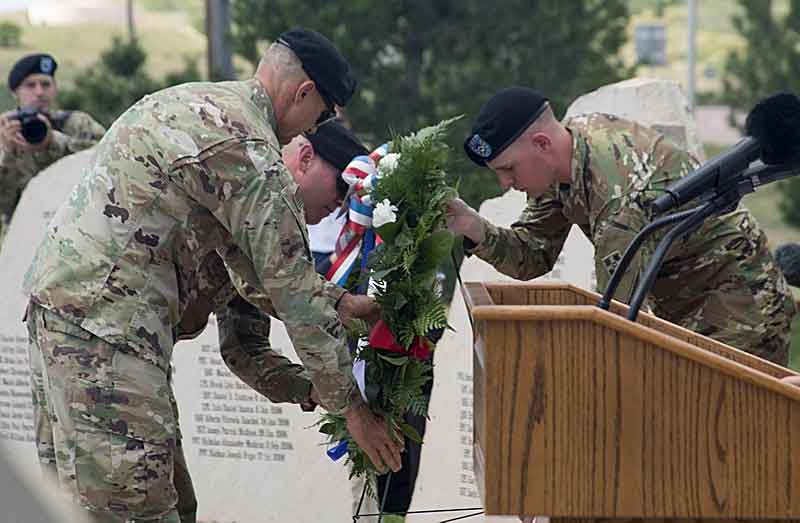
Cribben is survived by his parents, wife Shelly and two sons, Connor, 5, and Wyatt, 3.
The homecoming has been a challenge for the teams. The soldiers echo complaints muttered by innumerable soldiers, sailors, airmen and Marines who’ve spent time in a combat zone – bills, laundry and groceries make life complicated.
“Combat is easier, it’s a lot simpler. We eat chow together, we work-out together, we go on missions, repeat, repeat, repeat,” said Ross, the intelligence sergeant on Cribben’s team.
“It’s not like we don’t love being home, (but) I have always had a hard time coming home. Because if you are home someone else is fighting. And that sucks. You got to bite it off in chunks.”
As the Green Berets rejoin family routines at home, they still find themselves struck by small bolts of grief.
“One moment where a lot hit me at once, actually, (was) at my house,” Deryk said. “Shelly, Steve’s wife, was over. And I have the little pamphlet from Steve’s memorial, with his picture on it.
“I got it up on my whiskey bar, and the way I was sitting I could see Steve, his picture there, and Shelly was sitting right here. I could see him, I am sitting here with my family, and there is Steve.”
Original post http://gazette.com/memorial-day-even-10th-special-forces-elite-must-deal-with-loss-grief/article/1626658
Learn More…

Army Special Forces: An Inside Look at the Elite Group’s Capabilities
By Cindy McIntyre, U.S. Army
When it comes to elite military teams, the Navy SEALs often come first to mind. For the Army, though, that’s okay — Special Forces Soldiers prefer to be under the radar as the Army’s “quiet professionals.”
Recruiters visit Fort Sill and other installations regularly to find male and female officers and enlisted personnel who think they have the right combination of character and skills to wear the admired Special Forces Green Beret, or to be part of the three other Army Special Operations Forces (ARSOF) branches.
Two junior officers were on hand Aug. 3 at the Graham Resiliency Training Center to learn more about the opportunities, and one sergeant came by to submit his application packet as the result of a previous visit.
Sgt. Salah Elboraa, who reads and writes Arabic, said he wanted something more than what his current position offers. “I’m looking forward to a more challenging environment,” he said.

Sgt. 1st Class Kiel Mulhern, center leader for Fort Riley Special Operations Recruiting Battalion (Airborne), and Staff Sgt. Zachary Wangerin, recruiter for the same unit, gave a video presentation to the officers about each branch, and told them what they needed for their application packets.
Officers must be within a specific year-group as lieutenants, said Mulhern. And, they only get one opportunity to apply. Enlisted ranks from E-3 to E-7 are also recruited, and can apply again if they don’t get accepted the first time.
Wangerin said that only a small percentage of Soldiers even know that joining the ARSOF is an option in their careers.
In addition to meeting a minimum 240 Army Physical Fitness Test score, and a 107-plus General Technical (GT) score (110-plus GT or 110 Combat Score for Special Forces), applicants must be U.S. citizens.
They will all learn a foreign language and be airborne qualified by the time they complete their training, which takes up to 52 weeks or more to fully qualify them for a multi-faceted job in one of the four branches.
In addition, all ARSOF receive a range of extra pay, which for the languages alone can range from $100 to $1,000 a month. ARSOF Soldiers also tend to earn promotions faster.
SECURE THE VICTORY
The Civil Affairs branch of ARSOF is prepared to thrive in culturally diverse environments after receiving 13 months of intensive training at Fort Bragg, North Carolina.
They work with conventional units, host nations, and Special Forces to marginalize and weaken opposition forces. They also perform peacetime humanitarian work such as disaster relief, immunizations, and provide running water.

They are well-versed in the culture of the host nation and work with U.S. ambassadors and local community leaders to prevent conflict and help avoid “boots on the ground” that could inflame hostilities.
“They use a diplomatic approach before direct action,” said Mulhern. “You’ll become cultural experts.”
A civil affairs team is typically composed of an officer, two noncommissioned officers, and a medic who has enhanced medical skills.
PERSUADE, CHANGE, INFLUENCE
The Psychological Operations, or PSYOP, Regiment engages in psychological warfare to influence actions, behavior, values, beliefs, and attitudes of citizens and communities in support of Special Forces teams, U.S. ambassadors, allies, and coalition partners.
“They try to get the host nation to align with U.S. interests,” said Mulhern. During training they are given “impossible tasks” which call upon their intellectual skills more than physical capabilities.
Deployments are typically six months in teams of three to 12. These teams are also based out of Fort Bragg.
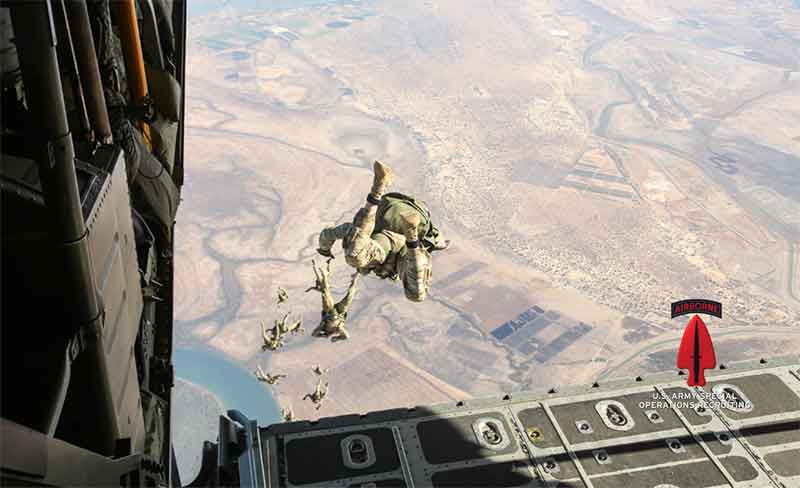
DE OPPRESSO LIBER (To Free the Oppressed)
The most elite team in the ARSOF is the Special Forces, also known as the Green Berets.
“They don’t like people to know what they’re doing and why they’re doing it,” said Mulhern. “They like to work behind the scenes.”
The Special Forces is the only military unit authorized by Congress to conduct “unconventional warfare,” said Mulhern. Even the Navy SEALs can’t engage in these types of operations, which include working with local resistance groups to remove leaders and promote greater regional stability.
They also engage in special reconnaissance, intelligence gathering, short duration direct action, and counterterrorism. The Alpha Team consists of 12 members who train for at least 64 weeks to attain the highly esteemed Green Beret role.
NIGHT STALKERS
The 160th Special Operations Aviation Regiment (Airborne) provides no-notice, worldwide, rotary wing support, precision air assaults and aerial gunnery. A Soldier must be in one of the authorized military occupational specialties to apply.

LEARNING A NEW LANGUAGE
Knowing how to communicate in the language of the host country is critical to ARSOF teams, and if they are not already fluent in a foreign language, they are trained to learn one.
The Defense Language Aptitude Battery (DLAB) is an aptitude test that cannot be studied for, as it measures one’s language-learning potential, not current knowledge.
Having a basic comprehension of how the English language works — grammar, sentence construction, and parts of speech — are critical skills to grasping how the DLAB’s fictitious language works.
Scores to qualify for Category I languages mean you can learn the easier languages such as French, Italian and Spanish. German is a Category II language, and the Category IV languages include Arabic, Chinese, Japanese and Korean.
For more information on ARSOF, visit: GoArmySOF.com.
Editor’s note: As the proud mother of a U.S. Marine, I cannot begin to imagine the depth of your loss. Please know your families are in our thoughts and prayers, and will continue on on behalf of the brave service members who make such enormous sacrifices every day, for all of us.













